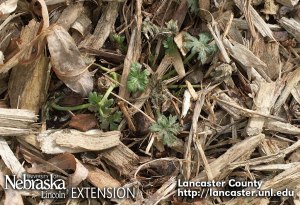It’s officially the first day of Spring!
It might not look like much to most folks, but I was doing a happy dance when I saw the purple poppy mallow in the Cherry Creek Pollinator Habitat starting to send up new leaves. This native wildflower will bloom from late spring through summer. It thrives in disturbed areas, along roadsides, ditches and overgrazed areas. In the garden, it is a sprawling plant full of beautiful magenta flowers.
While the purple poppy mallow is doing well, we’re going to have to replant the white clover. The local rabbits took care of our patch over the winter to the point where it won’t recover. Good thing I have plenty in my yard to share!
Also on our “to-do” list: Move the bee nest box structure outdoors, a stream clean-up and start expanding the habitat to the west. We have a lot to do!
We put together some information to help you attract pollinators to your landscape, along with the directions to make your own bee nest boxes…. You have plenty of time to make your own nest boxes and get them outdoors!
http://lancaster.unl.edu/pest/resources/354Pollinators.pdf
Here’s to Sharing the Buzz!
Soni
UNL Extension provides research-based information to help you make informed decisions any time, any place, anywhere – http://lancaster.unl.edu


